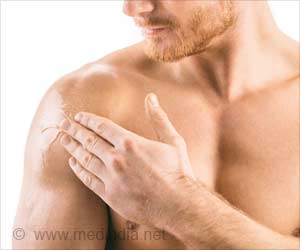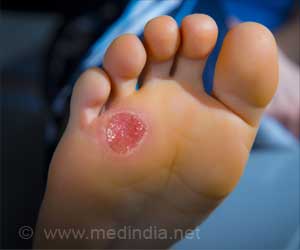Highlights:
- Smart bandages applied on chronic wounds have sensors that can assess the condition of the wound and whether it is healing properly so that drugs can be delivered on demand
- Application of smart bandages have been shown to aid the natural healing process and achieve improved healing of chronic non-healing wounds
- Diabetes, burn wounds and certain conditions are associated with ulcers or wounds that take a long time to heal with recurrent infections and possible amputation in some cases.
What are Smart Bandages and How do Smart Bandages Work?
Smart bandages are similar to traditional bandages that are applied on wounds to aid healing. However, the smart bandages are designed with inbuilt pH and temperature sensors that can monitor the degree of infection, inflammation and status of the wound.Wounds healing well normally have a pH between 5.5 to 6.5, while non-healing and infected wounds may have pH greater than 6.5. Similarly the temperature of a wound that has more inflammation will be more than a less inflamed wound.
These two parameters (pH and temperature) are measured by the inbuilt sensors and the microprocessor present in the smart bandage reads and interprets the data. If the wound is inflamed or infected, the heating element incorporated within the smart bandage heats the drug carrier which delivers the drug gel to the wound on demand so that healing can be better.
All the components such as the sensors, heating element, drug carrier and microprocessor are integrated to a transparent medical tape creating a flexible bandage less than 3 mm in thickness.
Components were chosen so that the bandage could be low cost and disposable. However, the microprocessor is reusable.
Problems Associated With Chronic Non-healing Wounds
- Non-healing chronic wounds that occur in diabetes or burn injuries pose a serious treatment challenge with recurrent infections, sometimes severe enough to require amputation.
- About 15 percent of Medicare beneficiaries undergo treatment for chronic wound or wound infection estimated to cost the healthcare system a whopping $28 billion, according to reports appearing in Value in Health.
- Most of these patients are elderly with poor mobility, and unable to care for themselves or dress the wound regularly or visit the healthcare facility. Despite this, chronic wounds are typically treated at home or in outpatient setting.
Other Features that can be Added to Make the Smart Bandage Smarter
Sonkusale and his team have also developed oxygenation sensors - another marker of wound healing - which can be incorporated into the bandage. Thus wound healing and inflammation can be monitored by various other biomarkers as well, in addition to measuring pH and temperature."The smart bandage we created, with pH and temperature sensors and antibiotic drug delivery, is really a prototype for a wide range of possibilities," said Sonkusale. "One can imagine embedding other sensing components, drugs, and growth factors that treat different conditions in response to different healing markers."
Future Plans
The smart bandages have been successfully tested under laboratory conditions. Now pre-clinical trials are ongoing to find out whether the smart bandages offer significant advantages in aiding healing compared to traditional bandages, dressings and other wound care products currently available.In conclusion, if the planned studies show smart bandages to be superior to traditional bandages and other products, it could well revolutionize the management of chronic wounds and improve the outcome for these patients.
Reference:
- Smart bandages designed to monitor and tailor treatment for chronic wounds - (https://www.eurekalert.org/emb_releases/2018-07/tu-sbd062918.php)
Source-Medindia











